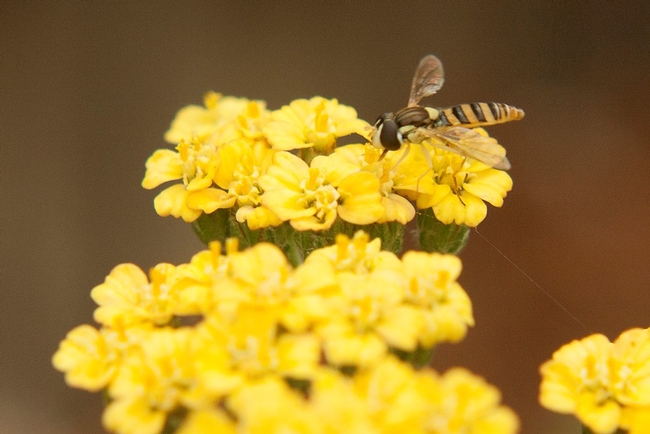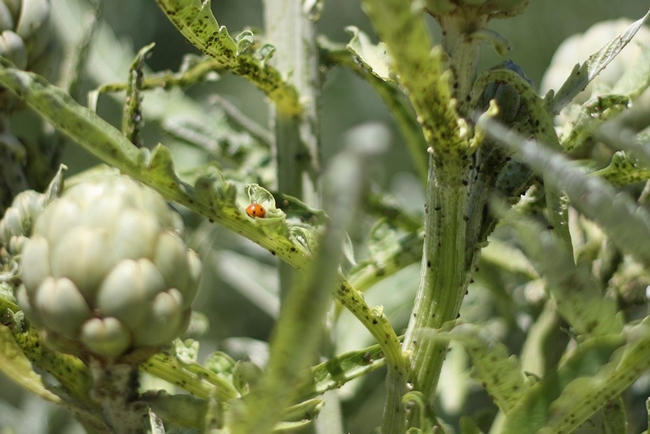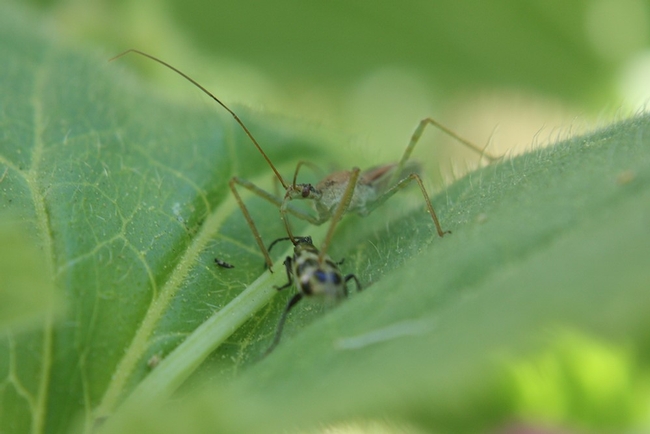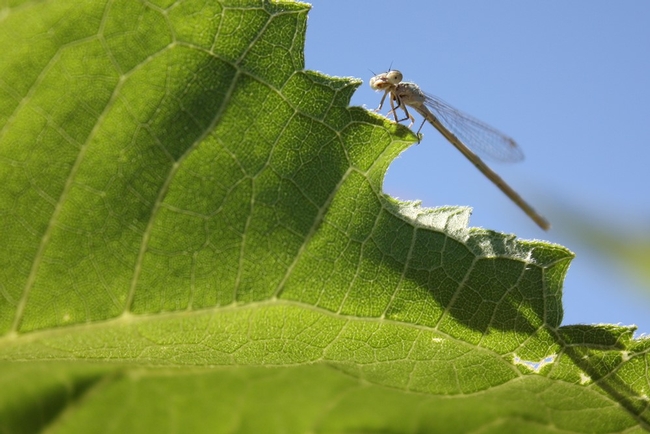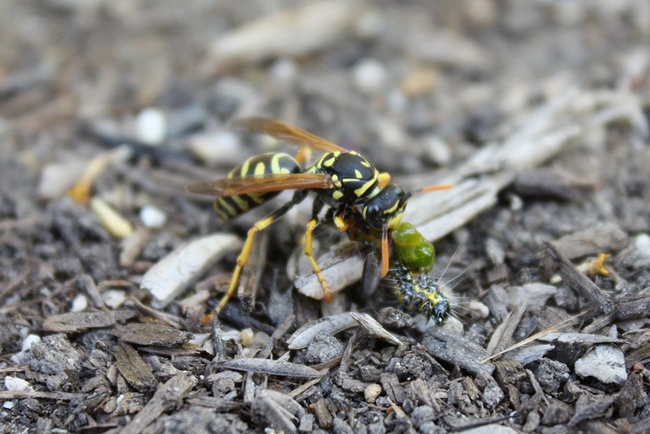Growing a Predatory Insect Paradise
No one likes aphids or cucumber beetles. No one welcomes slugs to their daily feast. We talk a lot about avoiding pesticides despite the rage at losing plants and crops we love, but do we really have to do anything about those colonies of tiny creatures bent on pure, gluttony, and destruction in our gardens?
It's July in my second summer gardening and I'm not sure anymore. The more time I have spent in the garden the more I've witnessed other insects we call “beneficials,” those savage, voracious predators of garden myth perform the functions touted in the most elevated tracts on the purely organic approach to gardening.
This is not to say I haven't had my share of aphid problems. Probably the reason I garden at all is that I grew my first crop during winter when I could watch my overpriced broccoli and cabbage seedlings unfurl and swell into beautiful, lush plants almost completely without my care (it was not a drought year; I barely even watered).
Then came spring. They arrived en masse, a clump burying themselves deep into the crevices of nearly every last broccoli head I hadn't harvested. Aphids. How discouraging to see these healthy plants so suddenly and completely caked with these creatures. This was my first awakening to an unfortunate truth of gardening.
The facts of not spraying pesticides in the garden
I decided when I began gardening that I wasn't spraying poison on my food. For me, it was a simple choice. This also meant deciding how to handle my second spring, when the aphids came again.
This year it began with the artichokes that as soon as the weather warmed was covered with ants. On close inspection, I found a number of aphids the likes of which I'd never seen anywhere. Before the black aphids were thick on the tips of my fava beanstalks, their green country cousins were heavy on those artichoke plants along the fronds of the leaves, caked around the neck of the chokes, even deep inside the chokes themselves hugging the crevices inside the leaves.
Pretty gross stuff.
I wrote those chokes completely off. Then something strange began to happen. I saw a few ladybugs on the artichokes one day and then noticed a tiny cluster of yellow eggs under a leaf. A week later, terrifying black and orange creatures were crawling everywhere and eating aphids in real-time. These ladybug larvae grew up into juveniles and adults pretty fast. It wasn't long until ladybugs at all stages of development claimed that artichoke plant for their own. The rest is garden history.
Biological pest control
The other day I saw a cucumber beetle on a melon leaf and was surprised because I hadn't seen one in a while, assuming that their population collapsed back in May. This one was moving strangely, its legs twisting wildly in the air. I looked closer before reaching for it and saw that an assassin bug had grabbed it. As I moved closer to get a better look, that assassin bug was dragging it away from me.
Before heading out to hand pick and squish the pests, it's helpful to know what bugs are on your side. UC Integrated Pest Management has a page with pictures of some common ones. UC IPM recommends encouraging these ravenous beasts by avoiding pesticides but also by proactively planting flowers for pollen and nectar and shelter, and also by controlling ants that will defend colonies of aphids and scale squeezing out the honeydew they prize.
There's a wide literature on biological control of pests for commercial gardeners, and these strategies can work well in the home garden. Part of the work is planting insectary plants, which are plants grown to attract, feed, and shelter insect parasites (parasitoids) and predators to enhance biological pest control.
In my garden, I've planted yarrow, four cultivars so far, as a perennial. In every nook leftover from my main vegetable crops I've planted marigolds, zinnias, and cosmos in addition to the spaces set aside for annual native lupines. It's easy to brighten up a garden with these kinds of flowers, and in my garden, they have attracted all the pollinating and pest help I could need.
Let the beneficials have their lunch
I the garden right now I have nearly every kind of predatory insect, and I've seen them hunting. Damselflies scour my sunflowers for leafhoppers. Ladybugs are largely gone, but so are all the aphids. I have hoverflies and I have spiders. Oh, do I have spiders. I have spiders I've never seen before, that I didn't even know existed. I saw a black jumping spider the size of a dime. A dime!
Even wasps are pitching in. When I first saw them prowling I wasn't too enthusiastic about it. Then I went out and they ignored me completely. They just want the bugs, all of them. On my annual native lupin, already going to seed, I noticed a cluster of caterpillars. I thought, okay, you can have those lupins. They're about to die back anyway and besides, they're shaded out by now. The wasps were very interested in those lupins. Then I saw one dive in and drag off a caterpillar so heavy it had to drop down to the ground and get its meal right there.
This is probably a long way of saying it's probably all right to lose a few heads of broccoli. Right now I harvest more snap beans and tomatoes every day than I can eat. My garden is not perfect, but I'd argue there's a kind of balance that wouldn't be there if I sprayed pesticides on everything. For me, there's no point. For all of us, there's plenty.
So what about the slugs? Slugs have their natural predators as well. I have an abundance of black beetles and fence lizards in my garden. I don't find so many slugs anymore.


